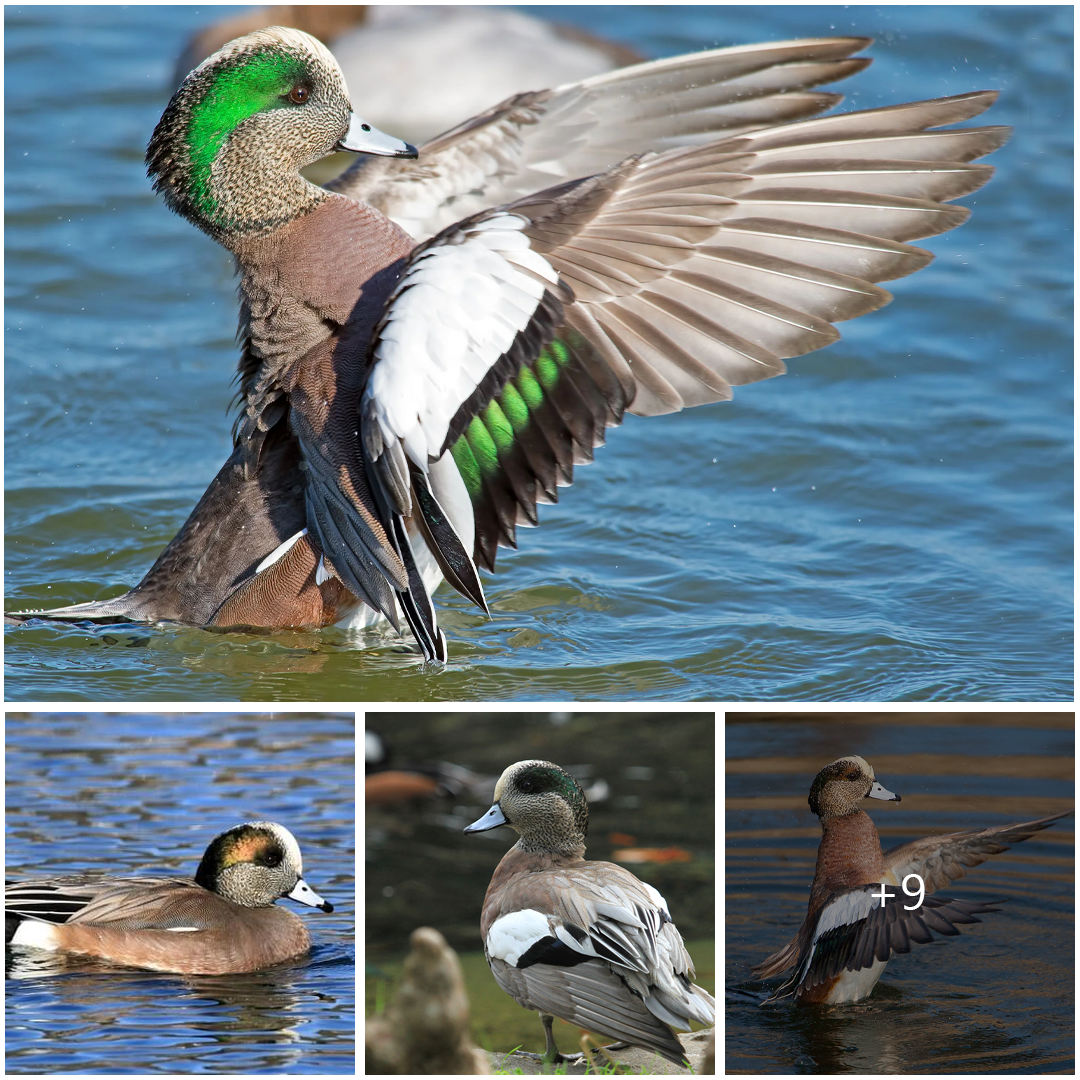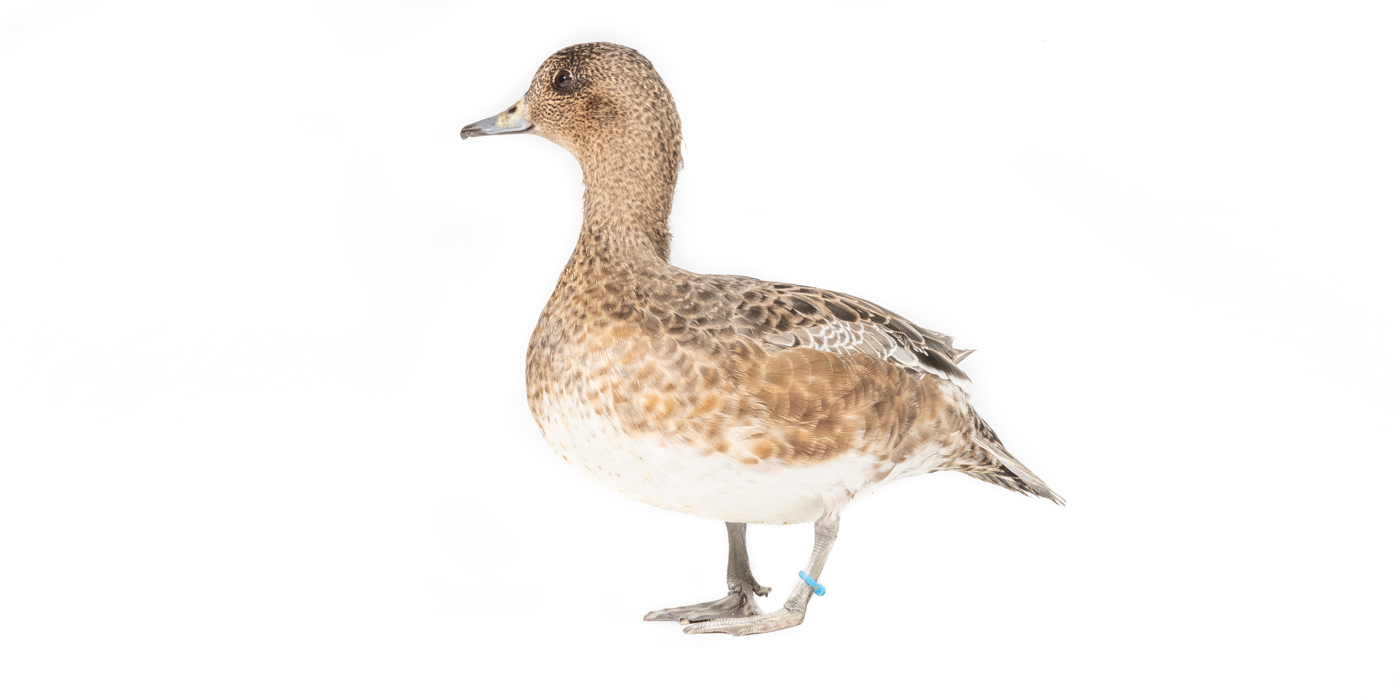
Exploring the American Wigeon: An Iconic Waterfowl of North America
The American Wigeon (Anas americana) is a striking and sociable waterfowl species that inhabits wetlands, marshes, lakes, and ponds across North America. Known for its distinctive plumage, vocalizations, and migratory behavior, the American Wigeon holds a special place in the hearts of birdwatchers and wildlife enthusiasts. Let’s delve into the fascinating world of this beautiful duck:

Appearance and Identification: The American Wigeon is easily recognizable by its striking breeding plumage, characterized by a creamy-white forehead and crown, a distinctive green patch extending from the eye to the back of the head, and a pinkish-brown breast with fine black markings. In flight, males display bold white wing patches, while females exhibit more subdued plumage with mottled brown and gray tones. Both sexes have a distinctive iridescent green speculum bordered by black and white.
Habitat and Range: American Wigeons are highly adaptable and can be found in a wide range of freshwater and brackish habitats, including marshes, ponds, rivers, and coastal estuaries. They breed in northern regions of North America, including Alaska and Canada, and migrate southward to wintering grounds in the United States, Mexico, and parts of Central America.
Behavior and Feeding Habits: These sociable ducks are often observed foraging in shallow water, dabbling for aquatic plants, seeds, and invertebrates. They also graze on grasses and grains in upland habitats. American Wigeons are known for their distinctive whistling calls, which can be heard during flight or while feeding. During the breeding season, pairs form monogamous bonds and select nest sites in dense vegetation near water bodies.
Conservation Status: While the American Wigeon is not currently considered globally threatened, it faces various challenges, including habitat loss and degradation, pollution, hunting pressure, and climate change-induced impacts on wetland ecosystems. Conservation efforts focused on habitat preservation, sustainable management of waterfowl populations, and public education are essential for ensuring the continued survival of this species.
Conclusion: The American Wigeon’s vibrant plumage, engaging behaviors, and widespread distribution make it a beloved and iconic species of waterfowl in North America. By promoting conservation awareness and taking proactive measures to protect its habitat, we can safeguard the future of this charismatic duck and ensure that future generations can continue to enjoy its beauty and grace in the wild.





